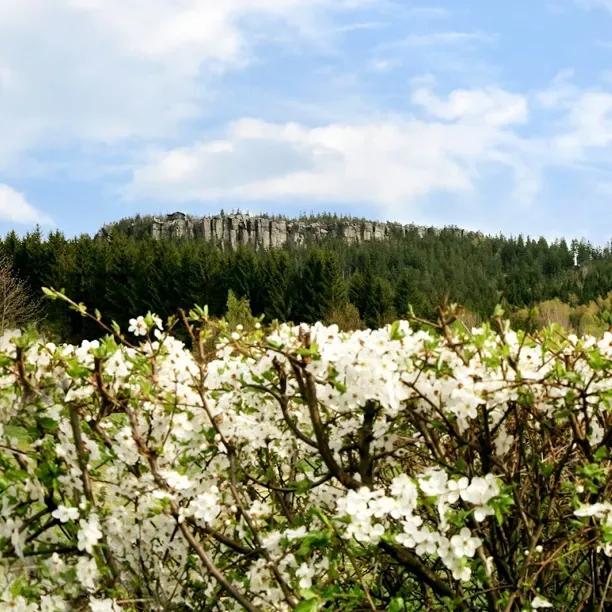All Seasons Ornamental Hedge Plants
The details
Decorative Hedging Collection
Hedge Plants- Bundles of 60 plants, composed of 10 Species.
- Leaves & flowers provide year round colour.
- Attracts wildlife.
- Ideal garden hedging.
- 1 pack = 20m of single row, or 10m of double row hedge.
- Any well drained soil except chalk.
- Bareroot Delivery: Nov-Mar
Recommended extras
Description
All Seasons Hedging Mix
These "All Seasons" hedge packs are mixed bundles of 60 plants. You can buy the same plants individually by ordering them from their respective pages, but you will save money on the same size plants with the hedge pack.
We will choose 10 of the following plants to go into the hedging mix: we regret that we cannot accept requests for specific plants to be used in your pack. If you want to be certain of having a particular plant in your hedge mix, please order it separately.
Decorative Hedging Collection
Hedge Plants- Bundles of 60 plants, composed of 10 Species.
- Leaves & flowers provide year round colour.
- Attracts wildlife.
- Ideal garden hedging.
- 1 pack = 20m of single row, or 10m of double row hedge.
- Any well drained soil except chalk.
- Bareroot Delivery: Nov-Mar
These decorative hedge plants have a colourful range of leaves, flowers and bark that will provide year-round interest, with a few edible fruit and nuts too. They are suitable for most gardens with reasonably fertile, well-drained soil. Some of the plants in this hedge mix may be poisonous to livestock. The mix will include some thorny plants and will create an effective barrier.
All Seasons hedge packs are only delivered bareroot, during winter (November - March).
The plants in this pack will be 40-80cm tall when we deliver them. All our hedge plants are measured by their height in centimetres above the ground (the roots aren't measured).
View our selection of hedging packs or see our full range of hedging options.
Please note: when you receive our mixed hedging packs, they will not be already mixed and will be bunched by plant species. Please remember to mix them for best results.
Spacing an Ornamental hedge:
Plant your hedging at 3 plants per metre, 33cm apart, for a secure hedge.
For an even better windbreak and wildlife habitat, you could plant at 6 plants per metre in a staggered double row, with 33cm between each plant along the row and 40cm between the rows.
Each pack of 60 plants will make 20 metres of single row hedge and 10 metres of double row hedge.
Planting Instructions
Growing Ornamental hedge plants:
This mix is suitable for any garden with decent drainage; most of the plants are native and very hardy. We recommend planting ornamental hedges in a sunny spot.
Prepare your site before planting:
It is good to dig over the area where you plant a hedge several months in advance, especially if the soil is poor. Destroy the weeds first: nettles, brambles and ground elder are tough and a glyphosate based weed-killer is the best way to remove them. Then dig the soil over; remove rocks, roots and other rubbish. Mix in well rotted compost or manure down to the depth of about 2 spades. If your soil is rich, you don't have to dig it over, but killing all the weeds is still necessary.
Watch our video on how to plant a country hedge for full details. You do not need to cut the plants in half after planting. It won't hurt the plants if you do, but it is only really necessary for stockproof country hedging. It is not essential to use mulch fabric if your hedge will be easy to water and maintain.
Remember to water establishing plants during dry weather for at least a year after planting.
Hedge Planting Accessories:
Prepare your site for planting by killing the weeds and grass with Roundup weed killer.
You can buy a hedge planting pack with sheets of mulch fabric and pegs to hold it down.
If you are planting in an area with rabbit and/or deer, you will need to use a plastic spiral guard for each plant, supported by a bamboo cane.
If your soil quality is poor, we recommend using mycorrhizal "friendly fungi" on the roots of new trees and shrubs.
You can also improve your soil with bonemeal organic fertiliser and Growmore.
After you plant a hedge, the most important thing to do is water it in dry weather. If you didn't use mulch of some kind, you will also need to weed around the hedge. Both of these will be necessary for at least a year after planting.
Trimming Ornamental hedge plants:
From the winter after planting onwards, your young hedge should be trimmed lightly once every winter, until it is mature. When it is fully grown, you can clip it at anytime. A good time to clip mature Ornamental hedges is in late autumn and winter.
Special notes on caring for Ornamental hedges:
To get the best displays of flowers from your hedge, use a relaxed clipping regime that lets the hedge grow freely for the spring and summer. In winter, it can be trimmed or hard pruned as necessary. All the plants in this mix respond well to being cut back hard.
If you didn't use a mulch fabric, it is beneficial to mulch around the base of the hedge each year with well rotted manure or compost.
Hygiene & Diseases:
Dead, damaged or diseased wood can be pruned off as soon as it appears.
Disinfect your pruning tools between every cut if there is any sign of disease.
Burn or dispose of any diseased material, do not compost it.


